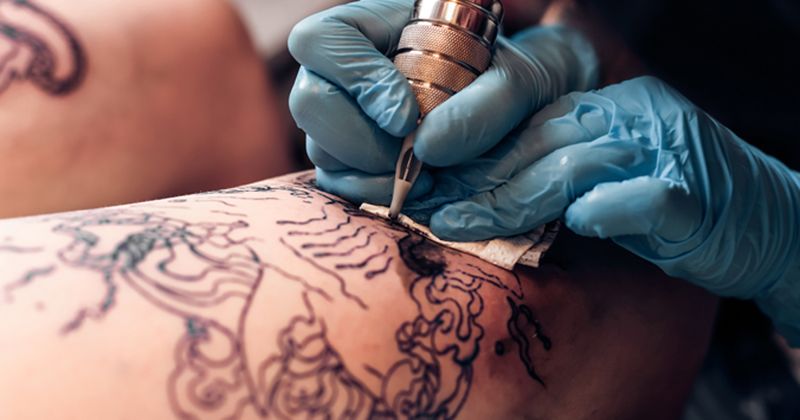Tattoo-related infections have risen sharply since 2000, study finds
Key takeaways:
- There has been a 77% increase in tattoo-related infections since 2000.
- Most infections and adverse reactions are not reported because people often go back to their tattoo artist rather than a clinic.
HOUSTON — There has been a 77% increase in tattoo-related infections since 2000, a study found, although researchers say the number of infections is likely much higher.
For the most part, tattooing is safe, but injecting ink into the skin for self-expression still poses potential infections while tattoos heal, researchers said.

A 2017 study found there were just under 400 tattoo-related adverse skin health events reported to the FDA between 2004 and 2016. In 2015, an outbreak of nontuberculous mycobacterial skin infections was linked to a bottle of ink in a tattoo shop in Miami-Dade County in Florida. The outbreak was discovered after a dermatologist treated three patients who had been tattooed at the shop.
Most infections related to tattoos are not reported, however, because they are not treated by doctors, according to researchers.
“This is about awareness,” Sandeep Kondakala, PhD, an ORISE research fellow at the FDA, told Healio at ASM Microbe. “People, if they have a tattoo artist ... if they have some kind of allergic reaction or infection, they initially do not go to the clinic — they go to the tattoo artist [and ask] what to do.”
According to Kondakala, 15% to 20% of adults in the United States have tattoos.
For their study, Kondakala and colleagues searched PubMed and Google Scholar for tattoo-related terms, including “permanent makeup,” and potential infections or reactions that could happen after receiving a tattoo.
After reviewing 6,959 records and case reports dating to 1877, they identified 185 reports of infections that qualified as clinical studies or case reports and included whether a pathogen or microorganism was detected. Fifty-one of these reports, representing 144 cases, occurred in the United States.
The earliest report, in 1877, was linked to Treponema pallidum, but there were relatively few reports until the year 2000. Between 2000 and 2023, however, the researchers identified a 77% increase in cases. In the United States, 38 reports and 108 cases have been documented since 2000.
The majority of cases reported since 1877 were bacterial infections (59%), followed by viral infections (38%) and fungal infections (4%). Since 2000, reports of infections caused by bacteria or fungi have increased 80% and viral cases have gone up 22%.
Before 2000, T. pallidum was the most common bacterial infection, causing 47.9% of infections. Since 2000, nontuberculous mycobacteria have been the most common cause, representing 51.8% of cases. S. aureus and M. tuberculosis made up 40% of cases.
The tattooing process itself was the most common source of infection, responsible for 72% of cases, followed by inks contaminated with pathogenic microorganisms and aftercare processes.
Kondakala most people with an infection or reaction go back to their tattoo artist and do not report the reaction or go to the doctor because it has resolved. He said if people sought care at a clinic instead and were observed or treated, it could help determine the actual health risks of getting tattooed, define trends and determine if regulatory structures are needed.
“Tattooing carries a risk,” Kondakala said. “But if you are getting a tattoo, you need to think about where you are getting it, what kind of ink are they using, [and if it is] professional grade. It’s very common to be able to get this kind of information nowadays.”

